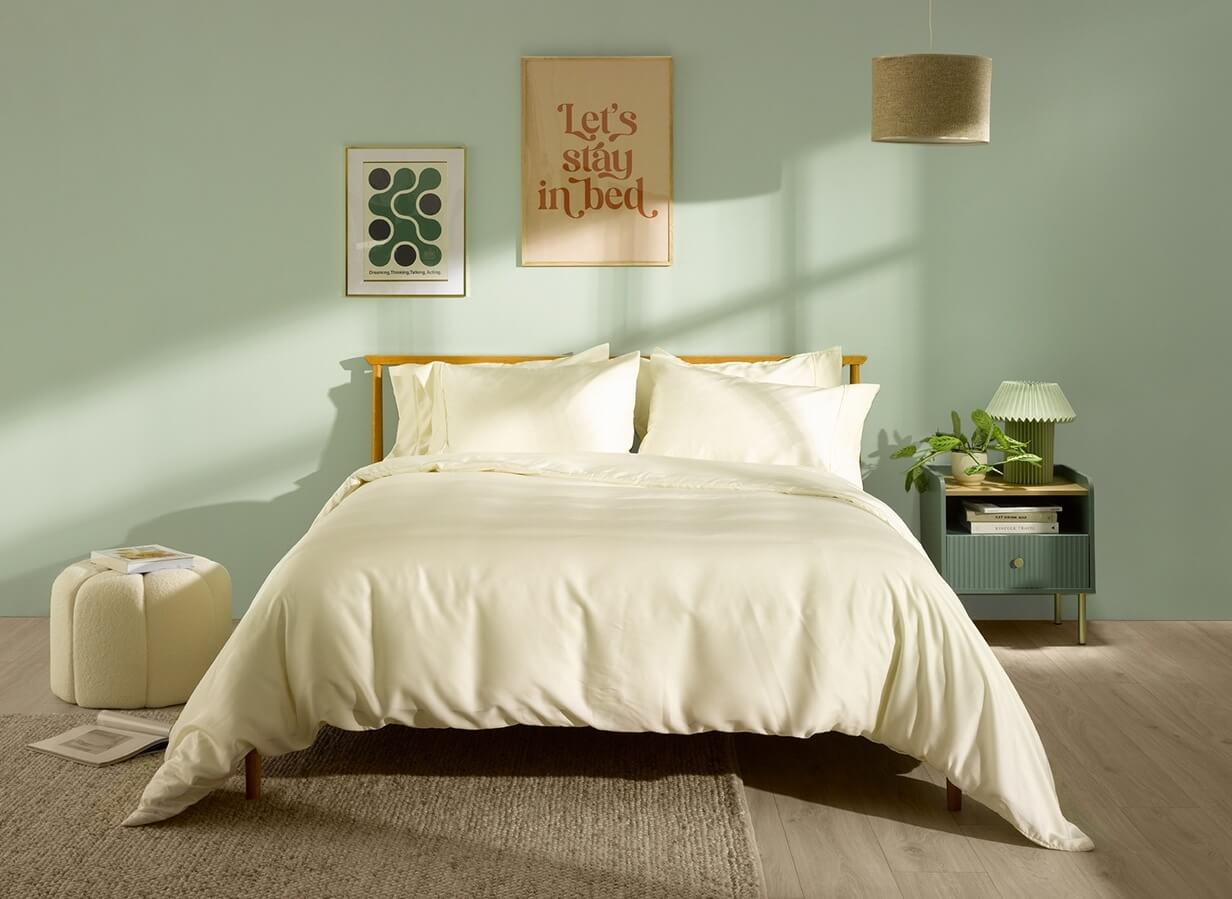
Where is Bamboo Fabric Made?
Bamboo fabric and its popularity
This type of fabric is a breathable, semi-synthetic viscose cellulose extracted from the plant itself – and it also refers to yarn made from the plant fibres, and lyocell-type bamboo fabric. It’s one of the softest fabrics out there, which is why we favour it for our products – it feels smooth and silky on the skin with inherent comfort. The material has naturally antibacterial properties (thanks to an in-built antimicrobial enzyme that repels harmful bacteria) and is one of the most eco-friendly organic products available.
Alongside ensuring you get a fantastic night’s sleep, bamboo fabric is used for yoga clothing, underwear, baby clothes and more: the natural fibres make it an ideal choice. It is hypoallergenic and often said to be as luscious as cashmere.
Sustainable production practices in the bamboo textile industry
Bamboo in itself is very sustainable – the plant regenerates from its roots, and is one of the fastest-growing plants in the world. It is also quite invasive, which is why cutting it down isn’t as damaging as it is with other types of plants.
Turning it into a material is a delicate process: bamboo stalks are cut down in a careful way to promote growth, and chopped up into little chips. These chips are then soaked in liquid until they turn into a pulp which is then dried and flattened into sheets. The sheets are milled and ground up, then spun into fibre. This fibre is spun into a very silky yarn, and voila!
With no harmful chemicals to encourage plant growth and by not using animals during any of the process, along with various other factors, the manufacturing production is both eco-friendly and sustainable.

![[MattressTopper] Panda London Memory Foam Bamboo Mattress Topper package box](http://pandalondon.com/cdn/shop/files/Bamboo_Mattress_Topper_Package_Box.webp?v=1742301823&width=1500)
![[MattressTopper] Panda London Memory Foam Bamboo Mattress Topper on the floor](http://pandalondon.com/cdn/shop/products/Panda-Memory-Foam-Bamboo-Mattress-Topper-Yoga-e1624045454555.jpg?v=1758795458&width=1000)
![[MattressTopper] Bamboo Mattress Topper Lifestyle Image with Memory Foam Pillows Product Page](http://pandalondon.com/cdn/shop/files/Bamboo_Mattress_Topper_Lifestyle_Image_with_Memory_Foam_Pillows_Product_Page.webp?v=1758795458&width=800)
![[MattressTopper] Bamboo Mattress Topper Lifestyle Image with Bamboo Pillows In the Garden room Product Page](http://pandalondon.com/cdn/shop/files/Bamboo_Mattress_Topper_Lifestyle_Image_with_Bamboo_Pillows_In_the_Garden_room_Product_Page.webp?v=1758795458&width=800)
![[MattressTopper] Panda London Memory Foam Bamboo Mattress Topper side](http://pandalondon.com/cdn/shop/files/Mattress_Topper_Isolated_-_resized.jpg?v=1758795458&width=800)
![[HybridMattressPro] Hybrid_Bamboo_Mattress_Pro_Product_Image_2026](http://pandalondon.com/cdn/shop/files/Hybrid_Bamboo_Mattress_Pro_Product_Image_2026.webp?v=1764944771&width=1000)
![[HybridMattressPro] Breathable Hybrid Bamboo Mattress](http://pandalondon.com/cdn/shop/products/Breathable-Hybrid-Bamboo-Mattress.jpg?v=1764944771&width=1920)
![[HybridMattressPro] Hybrid Bamboo Mattress Pro Cover Zip](http://pandalondon.com/cdn/shop/files/Hybrid_Bamboo_Mattress_Cover.jpg?v=1764944771&width=800)
![[HybridMattressPro] Panda Hybrid Bamboo Mattress Pro](http://pandalondon.com/cdn/shop/files/Hybrid_Bambo_Memory_Foam_Mattress_-_BioCell_Foam_x.jpg?v=1764944771&width=800)
![[HybridMattressPro] Couple on a Hybrid Bamboo Mattress Pro](http://pandalondon.com/cdn/shop/files/Hybrid_Bamboo_Mattress_Couple.jpg?v=1764944771&width=800)
![[CloudDuvet] Panda London The Cloud Bamboo Duvet Packaging](http://pandalondon.com/cdn/shop/products/Panda-London-The-Cloud-Bamboo-Duvet-Panda-Life-scaled_00a651ad-4ca3-4105-b520-12a94c1a4f71.jpg?v=1713363286&width=1920)
![[CloudDuvet] Panda London The Cloud Bamboo Duvet Rolled](http://pandalondon.com/cdn/shop/products/Duvet-Listing-Images03.jpg?v=1764079307&width=1000)
![[CloudDuvet] Panda London The Cloud Bamboo Duvet Girl Huggin a Duvet on the Bed](http://pandalondon.com/cdn/shop/files/Cloud_Bamboo_Duvet_-_Lady_Hugging_it_on_Bed_LifestyleImage.jpg?v=1764079307&width=1000)
![[CloudDuvet] Panda London The Cloud Bamboo Duvet Guy In the Air with Cloud Bamboo Duvet](http://pandalondon.com/cdn/shop/files/GuyonaHybridBambooMattresswithCloudDuvet.jpg?v=1764079307&width=2000)
![[CloudDuvet] Panda Cloud Duvet Winter on the bed lifestyle image](http://pandalondon.com/cdn/shop/files/Panda_Cloud_Duvet_Winter_on_the_Bed_Lifestyle-1_image.jpg?v=1764079307&width=1000)
![[BBWhite] White 100% Bamboo Bedding](http://pandalondon.com/cdn/shop/files/Pure_White_Full_Bed.webp?v=1719581797&width=1000)
![[BBWhite] White 100% Bamboo Bedding Texture](http://pandalondon.com/cdn/shop/files/100_Bamboo_Bedding_-_Pure_White_-_Close_Up_02.webp?v=1762879591&width=1000)
![[BBWhite] White 100% Bamboo Bedding Woman in bed sleeping](http://pandalondon.com/cdn/shop/files/100-Bamboo-Bedding-Set-Pure-White-BB.webp?v=1762879591&width=768)
![[BBWhite] White 100% Bamboo Bedding Woman Duvet cover buttons](http://pandalondon.com/cdn/shop/files/hand_and_buttons_1.webp?v=1762879591&width=1000)
![[BBWhite] White 100% Bamboo Bedding Woman in bed looking and smiling-](http://pandalondon.com/cdn/shop/files/SatonMadeBed-White100_BambooBedding-white_-_BB_SideShot1000x1000.webp?v=1762879591&width=980)
![[BBUrbanGrey] Urban Grey 100% Bamboo Bedding](http://pandalondon.com/cdn/shop/files/Made_Bed_-_Urban_Grey_-_Wide_Shot_2_1_1.webp?v=1762880019&width=1000)
![[BBUrbanGrey] Cloud Duvet Urban Grey 100% Bamboo Bedding Set](http://pandalondon.com/cdn/shop/files/Cloud_Duvet_-_Grey_-_Close_up_2.webp?v=1762880019&width=1000)
![[BBUrbanGrey] Urban Grey 100% Bamboo Bedding Set Woman sitting on the bed](http://pandalondon.com/cdn/shop/files/Sat_in_Bed_-_Grey_100__Bamboo_Bedding_-_Wide_Shot.webp?v=1762880019&width=1000)
![[BBUrbanGrey] Urban Grey 100% Bamboo Bedding Set Woman Duvet buttons Panda London](http://pandalondon.com/cdn/shop/files/hand_buttons_grey_bedding_1.webp?v=1762880019&width=1000)
![[BBUrbanGrey] Woman Sitting on the Bamboo Bedding with coffee](http://pandalondon.com/cdn/shop/files/SatonMadeBed-White100_BambooBedding-SideShot1000x1000.jpg?v=1762880019&width=1000)
![[BBNavyBlue] Deep Sea Navy Blue 100% Bamboo Bedding](http://pandalondon.com/cdn/shop/files/Made_Bed_-_Navy_-_Wide_Shot_3_copy.webp?v=1762879591&width=1000)
![[BBNavyBlue] Deep Sea Navy Blue 100% Bamboo Bedding Texture](http://pandalondon.com/cdn/shop/files/Cloud_Duvet_-_Navy_-_Close_up_2.webp?v=1762880019&width=1000)
![[BBNavyBlue] Deep Sea Navy Blue 100% Bamboo Bedding Woman Sitting on the bed](http://pandalondon.com/cdn/shop/files/Sat_Up_in_Bed_-_Navy_100__Bamboo_Bedding_-_Hands_on_Bed.webp?v=1762880019&width=1000)
![[BBNavyBlue] Deep Sea Navy Blue 100% Bamboo Bedding Duvet Cover Buttons](http://pandalondon.com/cdn/shop/files/Cloud_Duvet_Cover_Buttons_-_Deep_Sea_Navy.webp?v=1762880019&width=1000)
![[BBNavyBlue] Deep Sea Navy Blue 100% Bamboo Bedding Woman sitting on the bed looking away](http://pandalondon.com/cdn/shop/files/SatonMadeBed-White100_BambooBedding-SideShot1000x1000-001.webp?v=1762880019&width=980)
![[BBPink] Vintage Pink Blue 100% Bamboo Bedding](http://pandalondon.com/cdn/shop/files/Made_Bed_-_Pink_-_Wide_Shot_copy.webp?v=1762879591&width=1000)
![[BBPink] Vintage Pink Texture 100% Bamboo Bedding](http://pandalondon.com/cdn/shop/files/Cloud_Duvet_-_Pink_-_Close_up_2.webp?v=1762880019&width=1000)
![[BBPink] Vintage Pink Woman Sitting on the 100% Bamboo Bedding](http://pandalondon.com/cdn/shop/files/Sat_Up_in_Bed_-_Pink_-_Hands_on_Bed.webp?v=1762880019&width=1000)
![[BBPink] Vintage Pink Woman Sitting on the 100% Bamboo Bedding Duvet Cover](http://pandalondon.com/cdn/shop/files/Cloud_Duvet_Cover_Buttons_-_Vintage_Pink.webp?v=1762880019&width=1000)
![[BBPink] Vintage Pink Woman Sitting on the 100% Bamboo Bedding Woman looking far away](http://pandalondon.com/cdn/shop/files/SatonMadeBed-White100_BambooBedding-SideShot1000x1000-001_Vintage_Pink.webp?v=1762880019&width=980)
![[BBGrey] Light Grey 100% Bamboo Bedding](http://pandalondon.com/cdn/shop/files/Made_Bedding_in_Bedroom_-_Urban_Grey_-_Wide_Shot.webp?v=1762879591&width=1000)
![[BBGrey] Light Grey 100% Bamboo Bedding texture](http://pandalondon.com/cdn/shop/files/Texture17.webp?v=1762880019&width=1000)
![[BBGrey] Light Grey 100% Bamboo Bedding with Woman smiling](http://pandalondon.com/cdn/shop/files/Sat_Up_in_Bed_-_Grey_-_Hands_on_Bed.webp?v=1762880019&width=1000)
![[BBGrey] Light Grey 100% Bamboo Bedding with Duvet Cover buttons](http://pandalondon.com/cdn/shop/files/Cloud_Duvet_Cover_Buttons_-_Quiet_Grey.webp?v=1762880019&width=1000)
![[BBGrey] Light Grey 100% Bamboo Bedding with Woman smiling and sitting coffee](http://pandalondon.com/cdn/shop/files/SatonMadeBed-White100_BambooBedding-SideShot1000x1000-002-_Grey.webp?v=1762880019&width=980)
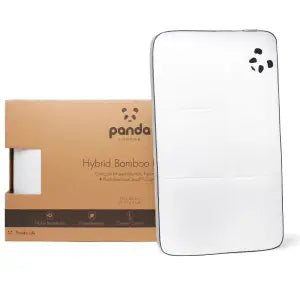 Hybrid Bambuskissen
Hybrid Bambuskissen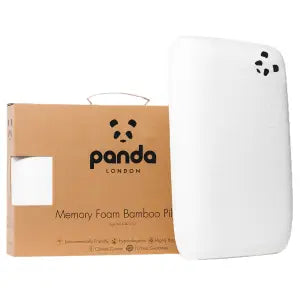 Memory Foam Bambuskissen
Memory Foam Bambuskissen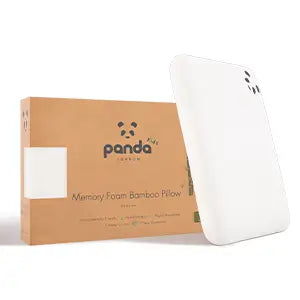 Memory Foam Bambuskissen für Kinder
Memory Foam Bambuskissen für Kinder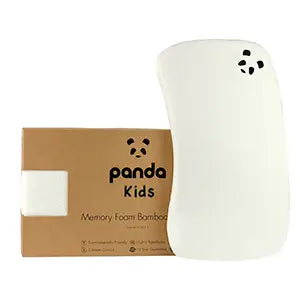 Baby Memory Foam Bambuskissen
Baby Memory Foam Bambuskissen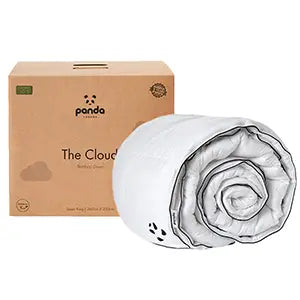 Panda Bettdecke Cloud
Panda Bettdecke Cloud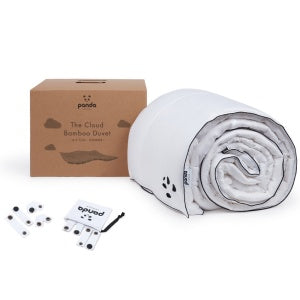 Sommerbettdecke aus Bambus
Sommerbettdecke aus Bambus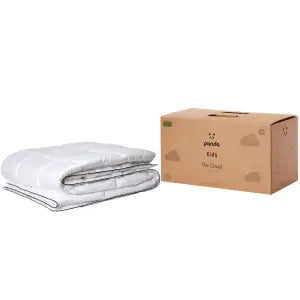 Kinder Cloud Bettdecke
Kinder Cloud Bettdecke![[ForestGreen] Fitted Sheet Signature Plus Corner image](http://pandalondon.com/cdn/shop/files/Green-PC-Corner-FC.jpg?v=1755076447&width=768)
![[PebblePillowcasesSignaturePlus] Texture Button Panda](http://pandalondon.com/cdn/shop/files/Pebble-Cream-Button.jpg?v=1715253572&width=768)
![[ForestGreen] Panda London Bamboo Lyocell Bedding Set Package](http://pandalondon.com/cdn/shop/files/Bamboo_Lyocell_Bedding_Set_Package.jpg?v=1713800411&width=768)
![[ForestGreen] Panda London Bamboo Lyocell Texture](http://pandalondon.com/cdn/shop/files/Green-Texture.jpg?v=1713800527&width=768)
![[ForestGreen] Bamboo Lyocell Green Corner Panda London](http://pandalondon.com/cdn/shop/files/GreenPCCorner.jpg?v=1713800525&width=768)
![[ForestGreen] Bamboo Lyocell Green Buttons Panda London](http://pandalondon.com/cdn/shop/files/BambooLyocellButtonsGreen.jpg?v=1713800525&width=768)
![[ForestGreen] Panda London Bamboo Lyocell Green Fitted Sheet](http://pandalondon.com/cdn/shop/files/Green_Fitted_Sheet.jpg?v=1713800503&width=768)
![[ForestGreen] Panda London Complete Bamboo Lyocell Bedding Set](http://pandalondon.com/cdn/shop/files/GreenBedding-FullSet.jpg?v=1713800527&width=768)
![[Cream] Panda London Bamboo Lyocell Full Bedding Set](http://pandalondon.com/cdn/shop/files/Bamboo_Lyocell_Bedding_Set_Package_Cream.jpg?v=1713800626&width=768)
![[Cream] Panda London Bamboo Lyocell Cream Texture](http://pandalondon.com/cdn/shop/files/PebbleCream-Texture.jpg?v=1713800973&width=768)
![[Cream] Panda London Bamboo Lyocell Full Bedding Set Cream Corner](http://pandalondon.com/cdn/shop/files/PebbleCreamPCCorner.jpg?v=1713800973&width=768)
![[Cream] Panda London Bamboo Lyocell Full Bedding Panda Bamboo button](http://pandalondon.com/cdn/shop/files/PebbleCreamButton.jpg?v=1713800973&width=768)
![[Cream] Panda London Bamboo Lyocell Full Bedding Fitted Sheet](http://pandalondon.com/cdn/shop/files/PebbleCreamFittedSheet.jpg?v=1713800973&width=768)
![[Cream] Panda London Bamboo Lyocell Full Bedding Set Lifestyle Image](http://pandalondon.com/cdn/shop/files/PebbleCreamBedding-FullSet.jpg?v=1713800973&width=768)
![[Pebble] Fitted Sheet Signature Plus Package Main Image](http://pandalondon.com/cdn/shop/files/Signature_Plus_Fitted_Sheet_Packshot_Cream_Collour-Main_Image.webp?v=1755014386&width=1277)
![[Pebble] Fitted Sheet Signature Plus Package Texture](http://pandalondon.com/cdn/shop/files/Pebble-Cream-Texture-FS.jpg?v=1755014386&width=768)
![[Pebble] Fitted Sheet Signature Plus Package Corner](http://pandalondon.com/cdn/shop/files/Pebble-Cream-PC-Corner-FS.jpg?v=1755014386&width=768)
![[Pebble] Fitted Sheet Corner Signature Plus PandaLondon](http://pandalondon.com/cdn/shop/files/Pebble-Cream-Fitted-Sheet.jpg?v=1755014386&width=768)
![[Pebble] Fitted Sheet Folded Signature Plus PandaLondon](http://pandalondon.com/cdn/shop/files/Pebble-Cream-Fitted-Sheet-Folded.jpg?v=1755014386&width=768)
![[Pebble] Fitted Sheet Signature Plus Package Lifestyle image Full set](http://pandalondon.com/cdn/shop/files/Pebble-Cream-Bedding-Full-Set-FS.jpg?v=1755014386&width=768)
![[ForestGreen] Fitted Sheet Signature Plus Package Main Image for Product Page Forest Green](http://pandalondon.com/cdn/shop/files/SIgnature_Plus_FItted_Sheets_Forest_Green_-_Main_Product_Image_for_PDP.webp?v=1755076447&width=1200)
![[ForestGreen] Fitted Sheet Signature Plus Texture image](http://pandalondon.com/cdn/shop/files/Green-Texture_a3822675-18cd-4a67-9707-bda67458231f-FC.jpg?v=1755076447&width=768)
![[ForestGreen] Fitted Sheet Signature Plus cORNER image](http://pandalondon.com/cdn/shop/files/Green-Fitted-Sheet.jpg?v=1755076447&width=768)
![[ForestGreen] Fitted Sheet Signature Plus Packed image](http://pandalondon.com/cdn/shop/files/Green-Fitted-Sheet-Folded.jpg?v=1755076447&width=768)
![[ForestGreen] Fitted Sheet Signature Plus Lifestyle Image](http://pandalondon.com/cdn/shop/files/Green-Bedding-Full-Set-FC.jpg?v=1755076447&width=768)
![[Cotbed] MattressProtectorKidsCotbe](http://pandalondon.com/cdn/shop/files/MattressProtectorKidsCotbe.jpg?v=1717589250&width=1857)
![[Cotbed] Mattress-Protector-Cot-Bed-768x768](http://pandalondon.com/cdn/shop/files/Mattress-Protector-Cot-Bed-768x768.jpg?v=1719409251&width=768)
![[Cotbed] Mattress-Protector-Cot-BedListing-Images02-](http://pandalondon.com/cdn/shop/files/Mattress-Protector-Listing-Images02-768x768.jpg?v=1719409251&width=768)
![[Cotbed] Mattress-Protector-Cot-BedListing-Images03](http://pandalondon.com/cdn/shop/files/Mattress-Protector-Listing-Images03-e1623787734812.jpg?v=1719409252&width=1300)
![[Cotbed] Mattress-Protector-Cot-BedListing-Images03 Corner](http://pandalondon.com/cdn/shop/files/Mattress-Protector-Listing-Images04-768x768.jpg?v=1719409251&width=768)
![[Cot] MattressProtectorKidsCot - Package](http://pandalondon.com/cdn/shop/files/MattressProtectorKidsCot.jpg?v=1719409259&width=1857)
![[Cot] MattressProtectorKidsCot - Package Full](http://pandalondon.com/cdn/shop/files/Mattress-Protector-Cot-768x768.jpg?v=1719409364&width=768)
![[Cot] Mattress-Protector-Listing-Images02-768x768](http://pandalondon.com/cdn/shop/files/Mattress-Protector-Listing-Images02-768x768111.jpg?v=1719409364&width=768)
![[Cot] Mattress-Protector-Listing-Images03-768x768](http://pandalondon.com/cdn/shop/files/Mattress-Protector-Listing-Images03-e16237877348121111.jpg?v=1719409365&width=1300)
![[Cot] Mattress-Protector-Listing-Images03-768x768](http://pandalondon.com/cdn/shop/files/Mattress-Protector-Listing-Images04-768x768111.jpg?v=1719409365&width=768)
![[BBPureWhitePillowcases] Bamboo Bedding Two Pure White Pillowcases](http://pandalondon.com/cdn/shop/files/Pure_White_Pillowcase_Bamboo_Bedding_Two_Pillows.webp?v=1721308652&width=1000)
![[BBPureWhitePillowcases] Bamboo Bedding Two Pure White Pillowcases Package](http://pandalondon.com/cdn/shop/files/Pure_White_Bamboo_Bedding_Pillowcases.webp?v=1721308652&width=1820)
![[BBPureWhitePillowcases] Bamboo Bedding Two Pure White Pillowcases Texture](http://pandalondon.com/cdn/shop/files/Pure_White_Pillowcase_Bamboo_Bedding_Texture.webp?v=1721308653&width=980)
![[BBPureWhitePillowcases] Bamboo Bedding Two Pure White Pillowcases Couples Changing Pillows](http://pandalondon.com/cdn/shop/files/Pure_White_Pillowcase_Bamboo_Bedding_Pillowcases_Changing.webp?v=1721308653&width=1000)
![[BBPureWhitePillowcases] Bamboo Bedding Two Pure White Pillowcases - Pillows on the bed](http://pandalondon.com/cdn/shop/files/Pure_White_Bamboo_Bedding_Pillowcases_Bamboo_Bedding_On_the_Bed.webp?v=1721308651&width=724)
![[BBNavyPillowcases] Bamboo Bedding Two Navy Pillowcases](http://pandalondon.com/cdn/shop/files/DeepSeaNavyPillowcaseBambooBeddingTwoPillows.webp?v=1721307802&width=1000)
![[BBNavyPillowcases] Bamboo Bedding Two Navy Pillowcases Package](http://pandalondon.com/cdn/shop/files/DeepSeaNavyPillowcaseBambooBedding.webp?v=1721307801&width=1820)
![[BBNavyPillowcases] Bamboo Bedding Two Navy Pillowcases Texture](http://pandalondon.com/cdn/shop/files/DeepSeaNavyPillowcaseBambooBeddingTexture.webp?v=1721307802&width=1000)
![[BBNavyPillowcases] Bamboo Bedding Two Navy Pillowcases Couple Changing](http://pandalondon.com/cdn/shop/files/DeepSeaNavyPillowcaseBambooBeddingPillowcasesChanging.webp?v=1721307802&width=1000)
![[BBNavyPillowcases] Bamboo Bedding Two Navy Pillowcases on the Bamboo Bedding](http://pandalondon.com/cdn/shop/files/Deep_Sea_Navy_Pillowcase_On_the_Bed.webp?v=1721308056&width=724)
![[BBQuietGreyPillowcases] Bamboo Bedding Two Quiet Grey Pillowcases](http://pandalondon.com/cdn/shop/files/Quiet_Grey_Bamboo_Bedding_Pillowcases_Two_Pillows.webp?v=1721308123&width=1000)
![[BBQuietGreyPillowcases] pacakge Pillowcases Bamboo bedding](http://pandalondon.com/cdn/shop/files/Quiet_Grey_Bamboo_Bedding_Pillowcases.webp?v=1721308123&width=1820)
![[BBQuietGreyPillowcases] Texture Pillowcases](http://pandalondon.com/cdn/shop/files/Quiet_Grey_Bamboo_Bedding_Pillowcases_Texture.jpg?v=1721308123&width=980)
![[BBQuietGreyPillowcases] Couple Changing Pillowcases](http://pandalondon.com/cdn/shop/files/Quiet_Grey_Bamboo_Bedding_Pillowcases_Changing.webp?v=1721308124&width=1000)
![[BBQuietGreyPillowcases] Pillows on the Bamboo Bed Panda London](http://pandalondon.com/cdn/shop/files/Quiet_Grey_Bamboo_Bedding_Pillowcases_On_the_Bed.webp?v=1721308123&width=724)
![[BBUrbanGreyPillowcases] Bamboo Bedding Two urban Grey Pillowcases](http://pandalondon.com/cdn/shop/files/Urban_Grey_Bamboo_Bedding_Pillowcases_Two_Pillows.webp?v=1721308480&width=1000)
![[BBUrbanGreyPillowcases] Bamboo Bedding Two urban Grey Package](http://pandalondon.com/cdn/shop/files/Urban_Grey_Bamboo_Bedding_Pillowcases.webp?v=1721308480&width=1820)
![[BBUrbanGreyPillowcases] Bamboo Bedding Two urban Grey Pillowcases Texture](http://pandalondon.com/cdn/shop/files/Urban_Grey_Bamboo_Bedding_Pillowcases_Texture.webp?v=1721308481&width=1000)
![[BBUrbanGreyPillowcases] Bamboo Bedding Two urban Grey Pillowcases Changing](http://pandalondon.com/cdn/shop/files/Urban_Grey_Bamboo_Bedding_Pillowcases_Chaning.webp?v=1721308481&width=1000)
![[BBUrbanGreyPillowcases] Bamboo Bedding Two urban Grey Pillowcases on the bed](http://pandalondon.com/cdn/shop/files/Urban_Grey_Bamboo_Bedding_Pillowcases_On_the_Bed.webp?v=1721308479&width=724)
![[BBVintagePinkPillowcases] Bamboo Bedding Two Vintage Pink Pillowcases](http://pandalondon.com/cdn/shop/files/Vintage_Pink_Bamboo_Bedding_Pillowcases_Two_Pillows.webp?v=1721308783&width=1000)
![[BBVintagePinkPillowcases] Bamboo Bedding Two Vintage Pink Package](http://pandalondon.com/cdn/shop/files/Vintage_Pink_Bamboo_Bedding_Pillowcases.webp?v=1721308783&width=1820)
![[BBVintagePinkPillowcases] Bamboo Bedding Two Vintage Pink Pillowcases Texture](http://pandalondon.com/cdn/shop/files/Vintage_Pink_Bamboo_Bedding_Pillowcases_Texture.webp?v=1721308784&width=1000)
![[BBVintagePinkPillowcases] Bamboo Bedding Two Vintage Pink Pillowcases](http://pandalondon.com/cdn/shop/files/Vintage_Pink_Bamboo_Bedding_Pillowcases_Chaning_Pillows.webp?v=1721308784&width=1000)
![[BBVintagePinkPillowcases] Bamboo Bedding Two Vintage Pink Pillows on the Bamboo Bedding](http://pandalondon.com/cdn/shop/files/Vintage_Pink_Bamboo_Bedding_Pillowcases_On_the_Bed.webp?v=1721308782&width=724)
